Today provenance is of prime importance in collecting antiquities. But it was not always so. Up to around 2010, auction houses and dealers rarely gave provenance in their listings, except when an item came from a well-known collection or was once owned by someone notable. Provenance was just not considered that important and as a result a vast number of legitimate antiquities are on the market with little or no provenance, due to the information not being recorded or passed on and becoming lost with time. Times have changed however, and pressure from the Heritage Sector means provenance, where it exists, is a now an important consideration in buying antiquities.
Provenanced antiquities will be worth more and be easier to sell than unprovenanced items. In addition, knowing an item's history enhances interest in a piece - it is no longer an anonymous object, but an object with a history of its own. So it is always good to buy well-provenanced items if you can. Provenance information can vary widely from 'Ex English private collection'. to 'With such-and-such dealer and a date' to 'Ex named collection'. When considering provenance one should consider what the provenance information actually tells you. Be wary of provenance statements that tell you nothing, such as 'Property of a London gentleman' (who?), 'Ex J.B. Collection' (who is J.B.?), 'Previously with a Mayfair Gallery' (which gallery?) and such like.
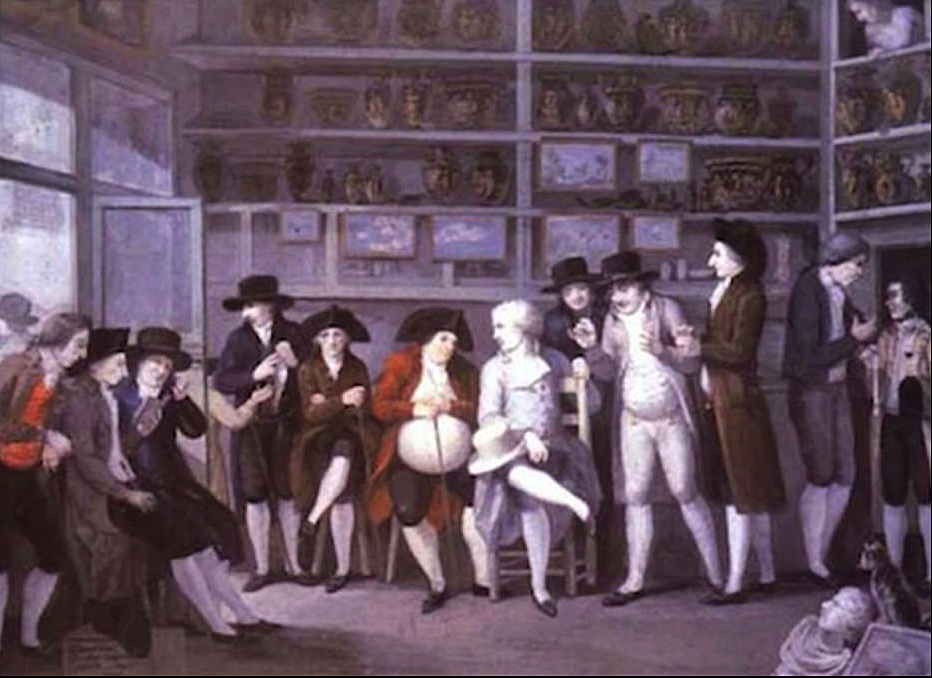
Inside an antiquity dealer's shop in Naples in the 18th Century.
The 19th and 20th Centuries saw a number of prominent and diligent collectors, often wealthy men (and women) but not always so, who built up large collections which have now been dispersed through the market. These collectors often combined scholarship and passion, some like Richard Hattatt and Desmond Morris published their collections (or parts of them) producing scholarly volumes that have become standard reference texts in the field. Others like Hugh Fawcett and Fred Clark meticulously documented the findspots of even the humblest artifacts. Others like Edward Hildyard kept extensive ledgers detailing where items were acquired, who from and when.
Here we provide short biographies of a number of eminent collectors, many of whose collections have been dispersed and occur on the market today. We have been fortunate to acquire items sourced from some of these historic collections and have been pleased to offer them to the current generation of collectors. The list is not exhaustive, indeed there were many more, and largely focuses on British and American antiquarians. Contrary to modern dogma, the market is not sustained by looting but by the efforts of collectors like these who collected at a time when antiquities could be legally acquired through vibrant western markets, and even legally in their countries of origin. The breakup of these collections supplies the present market and a large number of legally acquired antiquities are in private hands - around 5 million items just in Britain according to some estimates.
Eminent collectors
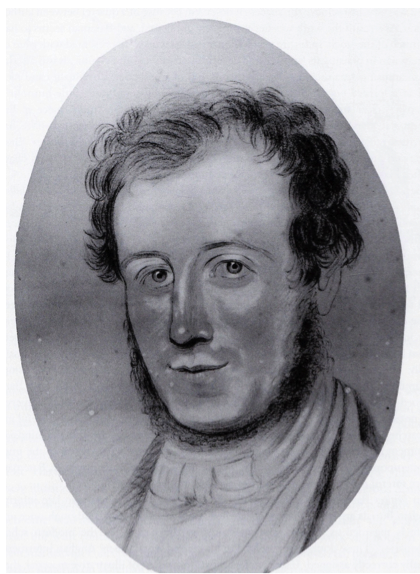
Crayon drawing of passionate collector Thomas Bateman made in 1845, showing him aged 24. Even at this early age he was an ardent antiquary and collector.
Bateman, Thomas (1821-1861) was a wealthy English gentleman and passionate collector who despite dying at a relatively early age (39) amassed a vast collection of antiquities of all types in the first half of the 19th Century. These were exhibited in crammed cabinets in his private museum at his country mansion, Lomberdale House, near Middleton, Derbyshire (see below). In his lifetime, he was renown for organising barrow digging and he and his associates are believed to have opened some 200 burial mounds in Derbyshire and the English Peak District. Bateman's wish was that his huge collection of antiquities should remain within the family. However his collection was auctioned off in 1893 and 1895. Many of his British prehistoric items were acquired by the Sheffield City Museum, but others are to be found in private hands.
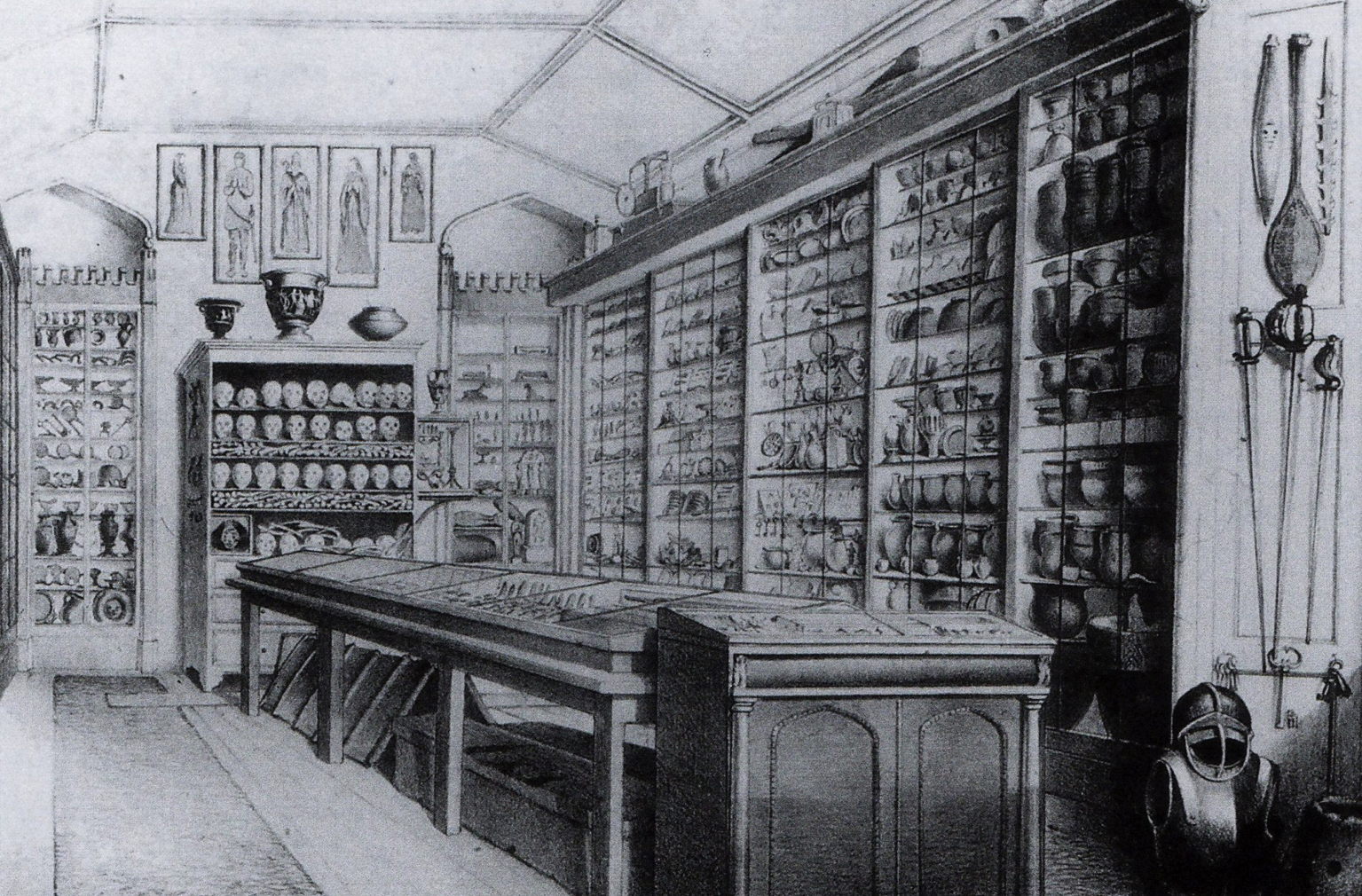
Part of Bateman's huge collection of antiquities in his private museum at Lomberdale House, Derbyshire. Note the Greek vases, Egyptian funerary items and skulls and long bones at the far end. The collection was auctioned in 1893 and 1895.
Bird, Julian (1959-2014) was a passionate collector of Egyptian antiquities, who built up a fine and extensive collection from the 1970s onwards. He sourced his items mainly from the UK market, from specialist dealers, fairs, markets and auctioneers. He was a model collector, carefully documenting his collection.
Cairns, Trevor, was Head of the History Department at Sunderland College of Education and assembled a collection of ancient tools and weapons in the 1960s and 1970s.
Clark, Fred Sydney (1923-2016) ran the Old Curiosity Shoppe, The Quadrant, Onslow Street, Guildford, Surrey, in the 1970’s-1980’s selling a range of collectables. A passionate collector and field-walker, he built up a fine collection of antiquities, notable for British prehistoric items, a significant number of which he obtained through trade with Dr. H.A. Fawcett. Like Fawcett, he was meticulous in documenting his collection, even the most humble tools were catalogued and fully labelled with locality, accession number and his characteristic monogram.
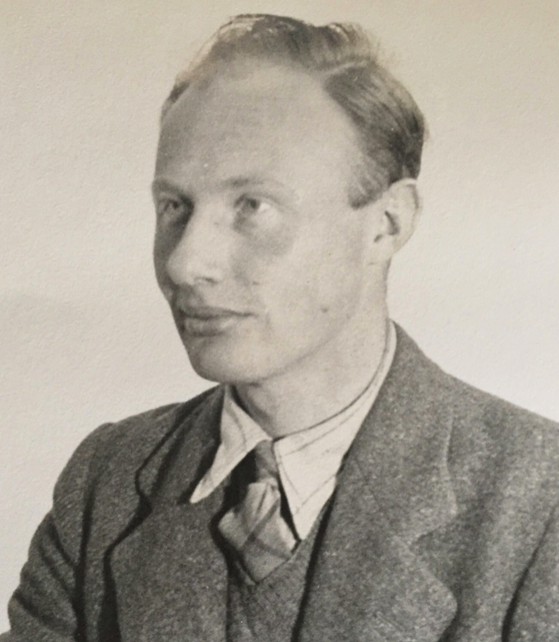
Fred Clark, a gifted and meticulous antiquarian, famed for his ancient coins and lithics collections.
Crawshay, De Barri (1857-1924) of Sevenoaks, Kent, was the son of a successful welsh ironmaster, and a notable collector who built up an important collection of flint implements and stone tools through collection in the field and through purchase. Today, he is best remembered for his collection of eoliths, now regarded as products of natural erosion, and for his work on palaeolithic material from the North Downs of Kent. He also cultivated orchids. His collection of flint implements was sold at auction by Stevens’s Auction Rooms Ltd, 38 King Street, Covent Garden, London, on 17 April 1929, although some pieces remained with the family.
Davie, James Alan (1920-2014) was a Scottish painter and musician, renown for his abstract expressionist paintings, which were strongly inspired by Zen philosophies. Examples of his work are held in many national museums and collections worldwide, including the Peggy Guggenheim Museum in Venice, The Museum of Modern Art in New York, the Tate Modern Gallery in London, and the Stedelijk Museum in Amsterdam, amongst others. A striking figure in later life with a thick mane of white hair and flowing beard, he resembled God as depicted in the creation scene on the Sistine Chapel ceiling. He was fascinated by the power of ancient art and borrowed freely in his compositions from cultures that valued the mythic, mysterious and poetic. He was appointed a Commander of the Most Excellent Order of the British Empire (CBE) in 1972 and elected a senior Royal Academician in 2012.
Davis, Robert Vincent, Professor (1945-2015) was a renown scholar and an acclaimed international expert on stone age axes. He was also the owner of an outstanding private collection. He was a Research Associate at the University of York and Chair and chief petrologist of the Implement Petrology Group, formerly the Implement Petrology Committee, one of the oldest specialist committees founded by the Council for British Archaeology.
Diniacopoulos, Olga (1906-2000) and Vincent (1886-1967) were remarkable husband and wife collectors who built up an extensive and truly remarkable collection of antiquities that filled their Montreal home. The existence of this fabulous collection was kept secret for decades, only in 1998 when Olga realised that she was nearing the end of her life, was the existence of the collection revealed to close friends. Their love of antiquity was so great that even cookie jars in the kitchen were full of Roman coins and at least on one occasion Olga paid Vincent’s medical bills using 2,500-year-old silver tetradrachms. Much of the collection was dispersed at auction, some was bought by the Quebec Government, a large number of pieces are housed at Concordia University, Montreal, others are on display at the Montreal Museum of Fine Arts. Many of the Egyptian objects in their collection were acquired in Egypt during the 1920s-1930s, with several originating from the Museum of Egyptian Antiquities in Cairo when it sold surplus pieces.
Dolman H. of Hendon, London, assembled a collection of Egyptian antiquities before the Second World War.
Drinkall, Pamela (1935-2010), was a curator at Scunthorpe Museum and New Walk Museum, Leicester. She formed a collection of Egyptian antiquities from the 1950s to 1960s.
Elghanayan, Nourollah (1915-2009) was an Iranian businessman who relocated to America from Iran with his family in the 1940s. From the 1950s onwards he and his three sons built up a very substantial real estate empire in New York and Washington D.C., recently estimated as worth 2 billion dollars. He was a keen collector of antiquities.
Fawcett. Hugh Alderson, Dr (1891-1982) was a general practitioner and antiquarian who built up an important collection of ancient implements, weapons and ornaments that eventually numbered some eight thousand items. It was he who alerted the British Museum to the discovery of the fabulous Mildenhall treasure after being shown it by Sydney Ford during Easter in 1946. The bulk of his collection is now in the Bristol Museum and Art Gallery, but Fawcett previously sold or traded many pieces in order to improve his collection. His distinctive monogram and careful recording of provenance makes his pieces readily identifiable.
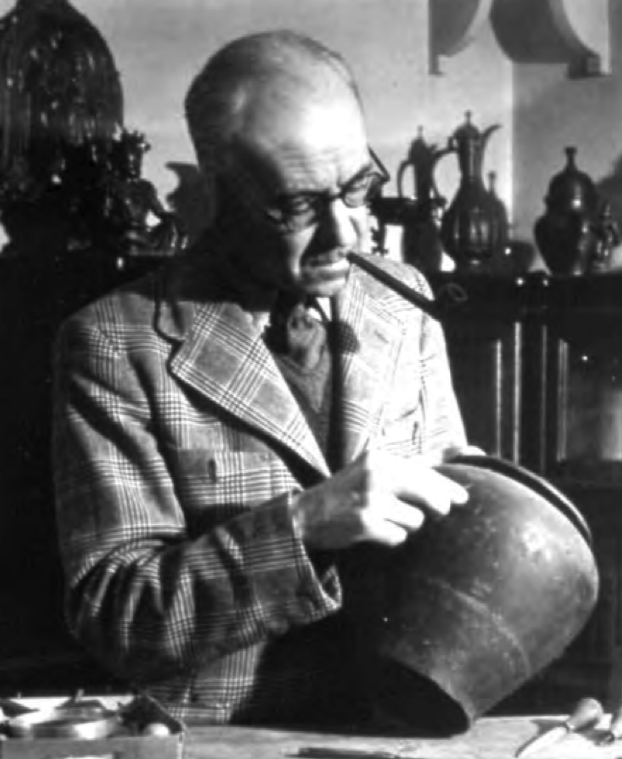
Dr Hugh Alderson Fawcett, general practitioner, antiquarian and fastidious collector.
Forman, Werner (1921-2010) was an eminent photographer, widely considered to be one of the world's foremost photographers of archaeological sites and ancient, oriental and primitive art. He was born in Prague in 1921 and dedicated himself to photography while still in his teens. During the Nazi occupation he documented for the Resistance atrocities in the Theresienstadt concentration camp at Terezin, Czechoslovkia, eventually spending time in German labour camps himself. After the war he worked as a photographer for the Czech State Airline. Later he specialised in photographing artworks and archaeological sites, ultimately photographing sites, cultural monuments and objects in over 55 countries, amassing a huge photographic archive that has become a valuable resource for publishers worldwide. Around 80 books have been published illustrated solely with his photographs. During his career he also assembled an extensive and somewhat eclectic private collection that included antiquities, Islamic, Indian, Tribal and Asian art. He sourced his collection from dealers and auction houses worldwide from the 1950s to the 1990s.
Forman, William Henry (1794-1869) was a millionaire welsh ironmaster, who bought the eighteenth century Pippbrook House at Dorking in Surrey. A passionate collector, he added a museum to the rear of the house to display his collection of antiquities. The house served as Dorking’s public library until it closed in 2012.
Foxwell, H.G. and Foxwell, E., Miss, assembled a collection of antiquities between the 1890s and the 1920s, acquiring items from the William Henry Forman collection, sold at auction by Sotheby, Wilkinson & Hodge, on 19 June 1899 and 2 July 1900; and the Rev. William McGregor collection, sold by Sotheby, Wilkinson & Hodge on 26 June-6 July 1922.
Gaze Cooper, Walter Thomas (1895-1981), an eminent composer and musician, served as an army driver during World War I, but was invalided out after being caught in a gas attack. He studied at the Royal Academy of Music and later at the Midland Consevatoire of Music. He lectured on orchestration at the University of Nottingham and founded (and conducted) the Midland Consevatoire of Music Orchestra in 1933, which became the Nottingham Symphony Orchestra in 1942. His hobbies included collecting old furniture and Chinese, Greek and Egyptian antiquities. His collection of Oriental antiques was reputed to be one of the most valuable in the UK at one time. Many of his Egyptian pieces were acquired from William Flinders Petrie (1853-1942).
Haggard, Henry Rider Sir (1856-1925), author of King Solomon’s Mines (1885) and She (1887), was fascinated by ancient Egypt since boyhood and collected antiquities acquired through friends and during visits to Egypt. Many of his objects are now in the Norwich Museum & Art Gallery. One piece, a fragment of pottery inscribed with the story of an Egyptian princess, which he describes in ‘She’ is a fake created especially for the novel but it stimulated much interest in Egyptian antiquities at the time.
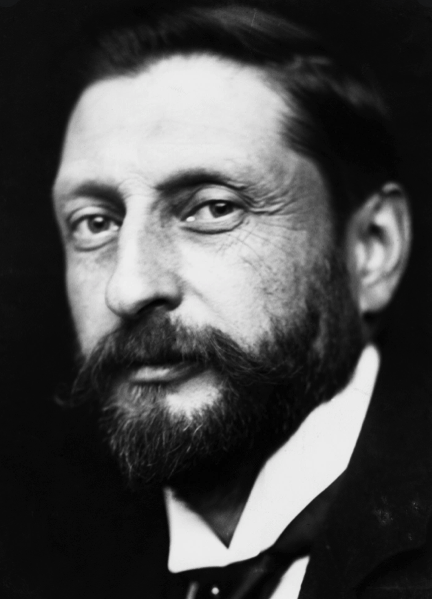
Sir Henry Rider Haggard (1856-1925) - author, visionary, collector.
Hattatt, Richard Alexander (1910-1992) was a Hampshire businessman who in retirement devoted his life to antiquities. Although interested in antiquities since school days, his collecting began in 1973 when his wife suggested "Why don't you collect Greek vases?". Buying from salerooms and dealers, he amassed some 200 or more Greek vases, among which was a new Athenian black-figure artist on an Attic white-ground amphora showing 'Dionysus and the return of Hephaestos' which has been named the Hattatt painter. Hattatt then turned his interest to Roman brooches and finding there was little literature on them, published at his own expense Ancient and Romano-British Brooches in 1982. Three further volumes followed diligently documenting his outstanding collection of some 1600 brooches, all illustrated by his line drawings. After the final volume was published and approaching 80, Hattatt presented many pieces to museums, sold some to dealers and the rest were auctioned through Sotheby's in 1990. In his later years, a widower, he became something of a recluse, apparently adopting a frugal lifestyle, reportedly water was boiled, not in a kettle, but in a small baked bean can to provide exactly the right amount for a cup of coffee. The weekly menu was mostly based on tinned food, never varying, so that shopping was quick and efficient and any increase in price immediately apparent. Hattatt was elected a Fellow of the Society of Antiquaries in 1983 and his name was inscribed on the 'Roll of Honour' on the Ashmolean Museum's main staircase, for his generous donations to the museum, which included the Hattatt painter vase.
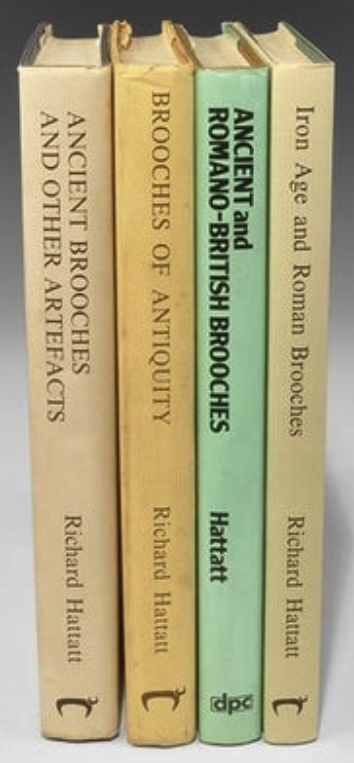
The four volumes documenting Richard Hattatt's vast brooch collection is an essential reference for collectors.
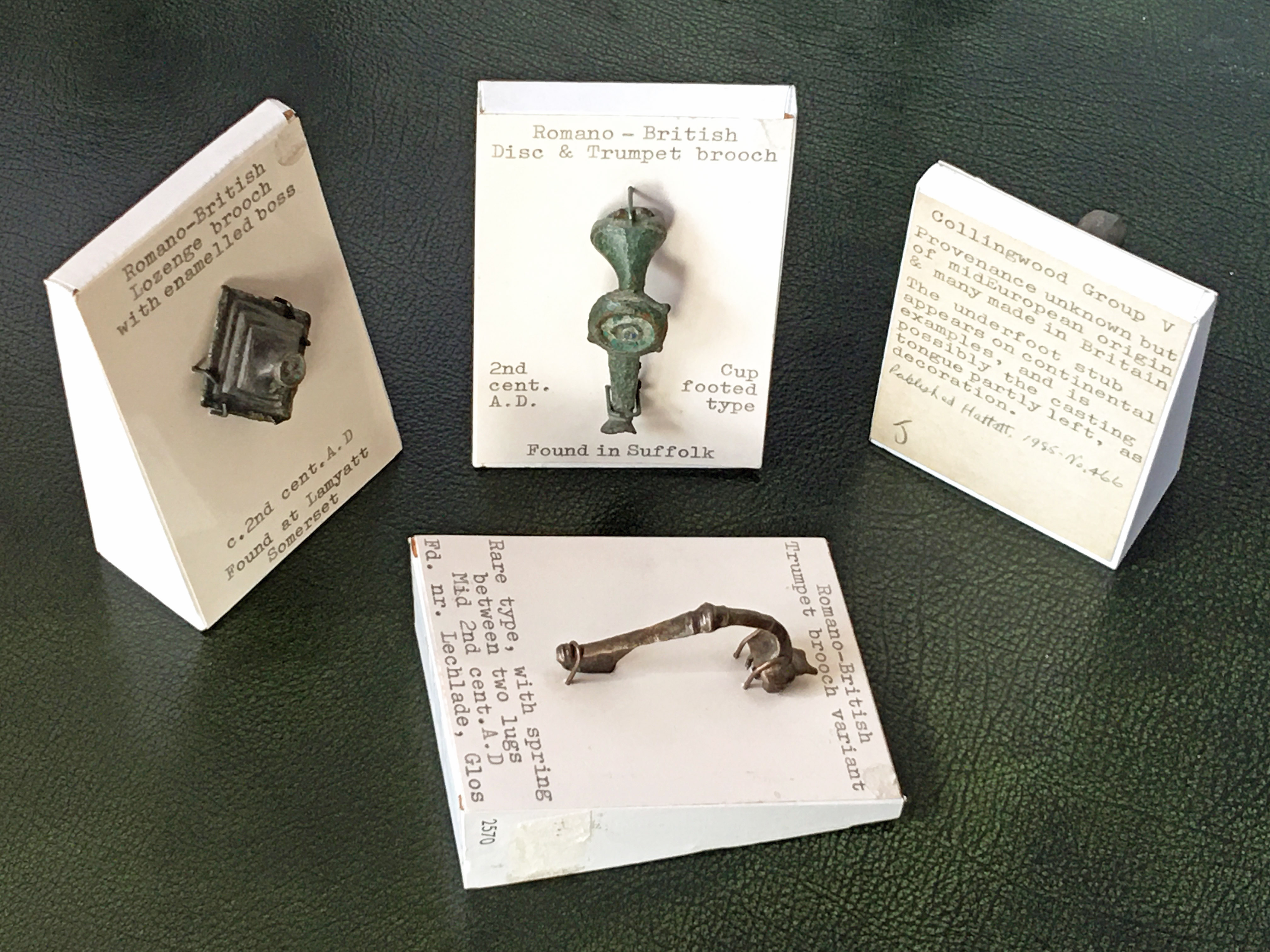
Brooches from the Hattatt collection showing their characteristic mounts and detailed annotation.
Herrera, Joaquin Guma (1909-1980) was a noted Cuban private collector of antiquities.
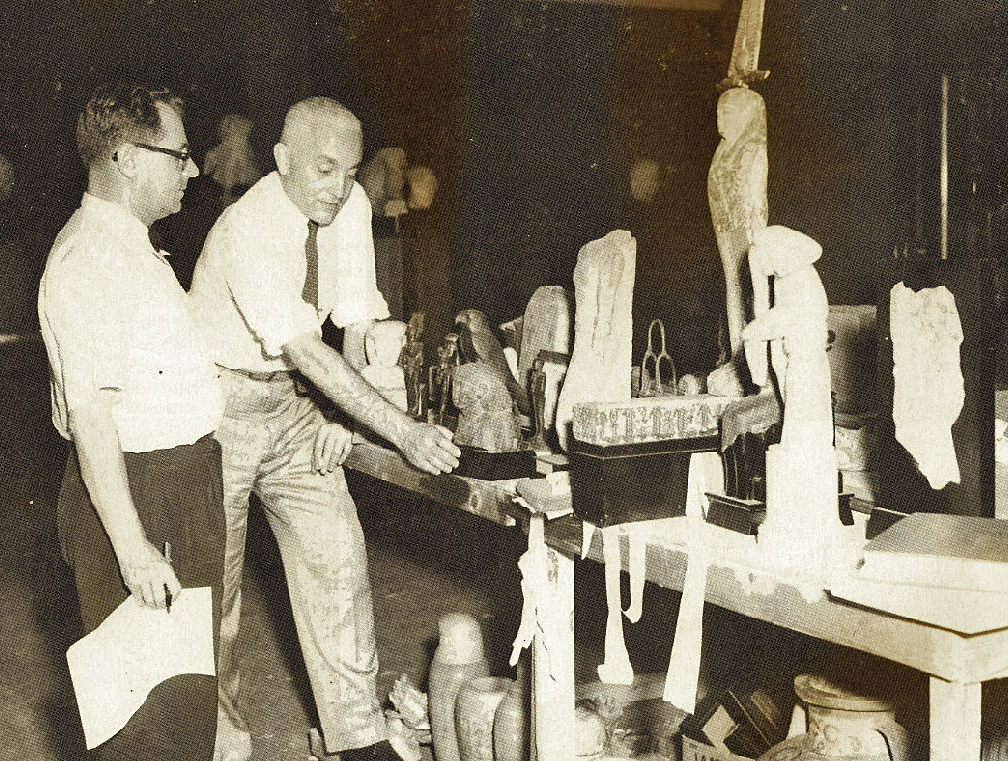
Joaquin Guma Herrera with part of his Egyptian collection, it shows the range of quality pieces available to wealthy private collectors in the mid 20th Century.
Hildyard, Edward J.W. (died 1964) was an English archaeologist and collector active in the first half of the 20th Century. His family seat was Horsley Hall, a fine and extensive country house at Bishop Auckland, County Durham, now a hotel. Passionate about the past he published widely in archaeological journals from the 1930s to the 1950s, demonstating a particular interest in Roman archaeology. He amassed an important collection of ancient coins and antiquities. His Roman, ancient Indian and British coins were auctioned by Baldwin’s Auctioneers, London, in 2008, and his collection of antiquities has been widely dispersed through leading auction houses and dealers and to museums.
Hilton Price, Frederick George (1842-1909) was a banker, who worked his way up from a junior clerk to a partner at the London bank Child & Co. (today a brand within the NatWest Banking Group). He was also a distinguished amateur historian, archaeologist and avid collector. His focus was on English finds (particularly those found in London) and Egyptian antiquities, but he also built up important collections of fossils, coins, clocks and spoons. Many of his fossils came from the Gault Formation in Folkestone on which he was an acknowledged expert. He also explored and excavated a number of archaeological sites in England and Wales and authored numerous papers presenting his findings. Hilton Price regularly exhibited Egyptian objects at learned exhibitions in London in the later years of the 19th Century, such as at the Society of Biblical Archaeology and the 1895 Exhibition of the Art of Ancient Egypt organized by the Burlington Fine Arts Club. He also regularly consigned objects to Sotheby's to raise funds to expand and upgrade his inventory. Hilton Price published two lavish catalogues of his Egyptian collection in 1897 and 1908 describing in total 5288 objects, although these were based on earlier manuscript catalogues, which contained iuformation on many more items. Following his death, his Egyptian collection was sold at Sotheby's in London over eight days in the summer of 1911, at the time the largest group of Egyptian antiquities to come on to the British market in living memory. The sale realised £12,040 (equivalent to £1.5 milllion tioday). There were 71 purchasers at the sale, including many notable collectors, but the largest purchasers by number of lots and objects, were dealers, such as S. G. Fenton, G. F. Lawrence, and Robert de Rustafjaell (1859–1943) from London, Kalebjian Frères from Paris, and Ralph Huntington Blanchard (1875–1936) from Cairo.
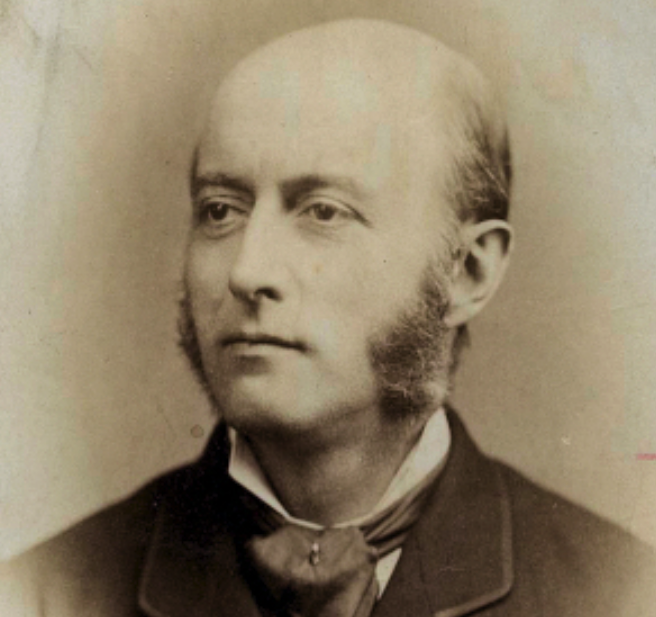
Frederick George Hilton Price, a successful banker renown for his collection of Egyptian antiquities.
Kennedy. Seward (1925-2015) was a successful lawyer and passionate collector who over six decades, assembled a veritable cabinet of curiosities which filled his homes in London and New York City. This diverse collection included tribal, Indian, tantric, Chinese and Japanese items as well as contemporary art. In the 1950s-1960s he worked as a lawyer for the Mobil Corporation and travelled extensively in Egypt, Turkey, Greece and Cyprus. His strong interest in antiquities led him to assemble a fine collection of artefacts from a number of civilisations. Few items in the Seward Kennedy Collection are provenanced, as most were bought at a time when provenance was not regarded as particularly important. Also Kennedy was more concerned with their aesthetics, to him a fine modern knapped arrowhead was just as worthy of collection as a prehistoric piece.
Klein, Joseph (1899-1987) was born in Warsaw, Poland, but moved to Paris as a teenager with his family who established a luxury leather goods factory. Fleeing the Nazi invasion of France in 1940, the family lost everything they owned, but made it to Lisbon where they obtained passage on the SS Excalibur, one of the last American ships to leave Europe in December 1941. Arriving as a refugee in New York, Joseph was able to re-establish his family’s luxury leather goods business. Long interested in antiquities, Joseph began rebuilding his collection from New York auction rooms and also from European dealers while holidaying in Europe after the war. After his death, his collection was put into storage for nearly 30 years before being auctioned at Bonhams in London in October 2012.
Lambor, Jerzy Roman ‘George’ (1927-1997) was born in Poland but left the country in 1939, first going to France as a refugee, and then when France was overrun he made it to Britain. His father Dr Henryk Lambor remained in Poland and joined the resistance but was betrayed and executed. Lambor, fascinated by antiquities from childhood, originally planned to become an archaeologist, but his father’s death forced him to change his plans in order to support his family. A variety of occupations followed, from journalism on a Polish-language newspaper to a stage manager in a touring theatrical company, he also worked as a door-to-door salesman and in a sawmill. In the mid-sixties he and his wife settled in Brighton where he achieved a long-held ambition opening an antiquities gallery. Later he opened a second in the Chenil Galleries in Chelsea. His involvement in the antiquities trade led him to found the Antiquities Dealers Association (ADA) in 1982 which established a strict code of conduct for professional dealers and remains to this day the premier trade association for British antiquities dealers. Another of Lambor’s projects was a campaign to establish a register of antiquities in private hands to confirm provenance and licit ownership. However support never really materialised to further this worthy cause. He also felt passionately that the often antagonistic parties involved in antiquities should be bought together and in 1991 founded the Antiquities Liaison Group as a forum for academic and amateur bodies. In 1986 Lambor launched an antiquities magazine aimed not only at collectors but for everyone interested in the ancient world. First called Agora Magazine and initially aimed at his Brighton gallery clients, it was renamed Ancient in 1987 and ran to 67 issues gaining worldwide readership, but sadly ceased publication in 1999. Still the best magazine for collectors, copies of Ancient can sometimes be found on eBay and are well worth seeking out.
MacGregor, William, Reverend (1848-1937) was born into a wealthy family and was vicar of Tamworth, Staffordshire, during 1878-1887. He was also a leading social reformer financing Tamworth’s first hospital, building churches and was patron of many of the towns institutions. He also built up one of the most remarkable private collections of Egyptian antiquities, which was kept in a purpose built museum at his home at Bolehall Manor, Tamworth. He also sponsored and participated in several excavations in Egypt. His collection was sold over nine days by Sotheby, Wilkinson & Hodge from 26 June to 6 July 1922 and totalled 1800 lots which fetched over £34,000 (equivalent to £1.68 million in 2020).
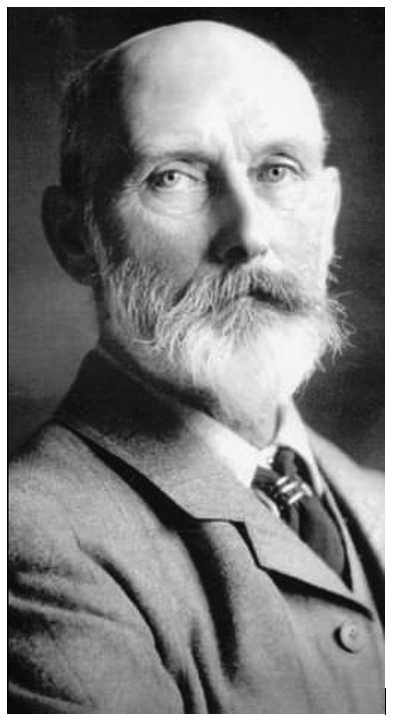
The Reverend William MacGregor, leading social reformer, philanthropist and passionate collector.
McAlpine, Robert Alistair, Lord McAlpine of West Green (1942-2014) ), part of the McAlpine construction dynasty, was treasurer and a major fundraiser for the British Conservative Party, a successful businessman and a major giver to charities. He was also a passionate collector whose interests included beads, books, sculpture, textiles, taxidermy, paintings, tribal art and antiquities – once requiring a warehouse to store his substantial and varied collections, although he sometimes donated or sold items to museums. In 2002, McAlpine, with a new wife 20 years his junior, moved to Italy and bought an old converted convent which they turned into a bed-and-breakfast. Paying guests staying there had access to McAlpine’s vast museum-quality collection of tribal and folk art and to his library, which held 14 tons of books. Some of McAlpine’s antiquities were exhibited at the Ashmolean Museum, Oxford, where he funded the construction of a gallery which bears his name. A considerable number of antiquities from his collection were sold through Sotheby’s in London in February 1994.
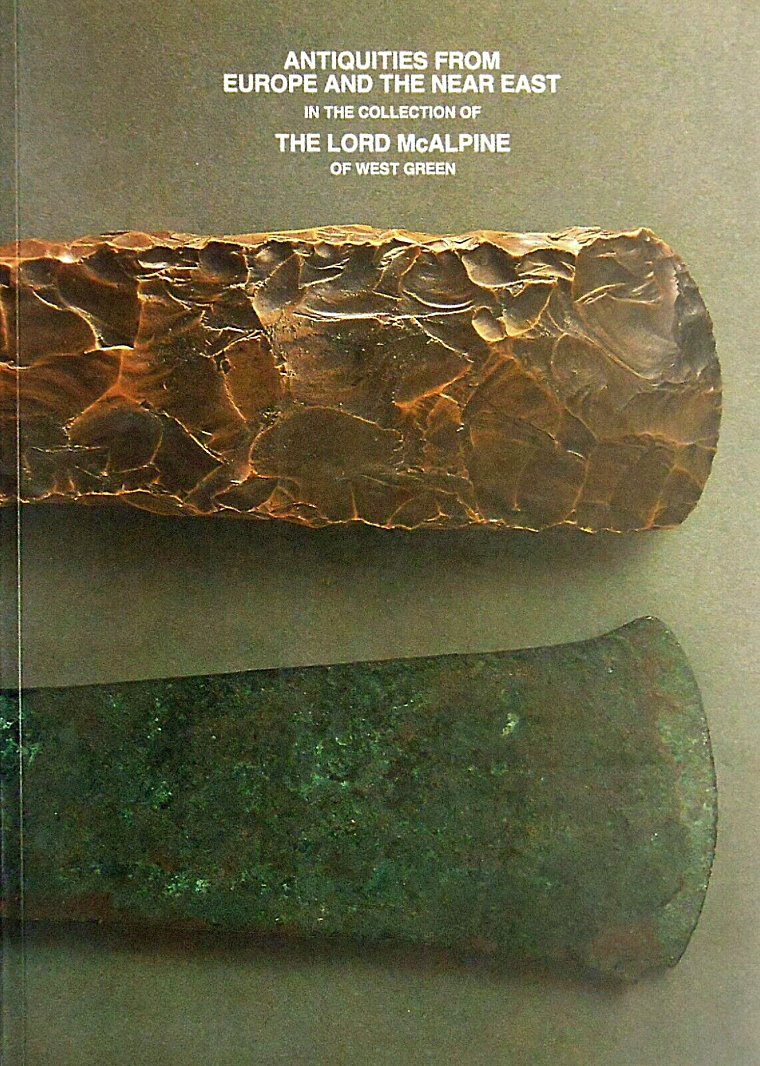
An essential reference for collectors of ancient tools, McAlpine's catalogue of his exhibition at the Ashmolean Museum provides a wealth of comparative material. The introduction also contains a very useful guide to early collectors marks and labels with brief biographies.
Melas, Horatio and Patsy were husband and wife collectors in Alexandria, Egypt, during the first half of the 20th Century. Horatio Melas came from a family of Greek merchants who moved to Alexandria in 1904. There he met his wife Patsy and they married in 1960. In 1967 the family relocated to Switzerland, taking their antiquities collection with them. There it remained until 1989, when their son Kyros Melas moved to London. Kyros worked in the City as a Private Equities trader and continued to curate the collection, occasionally adding to it until the late 1990s.
Meux, Valerie Susie, Lady (1847-1910) (pronounced 'Mews') was born a butcher's daughter called Valerie Susan Langdon, but became a wealthy London socialite and a noted collector of Egyptian antiquities - a true rags to riches story. She had the good fortune to meet and marry a very wealthy man, Sir Henry Meux, 3rd Baronet (1856-1900) a London brewer, who unusually in such cases, was 10 years younger than her. She claimed to have been an 'actress' before her marriage, but it was widely believed she was actually a barmaid. As a result she was never accepted by her husband’s family or by 'polite' society. Nevertheless, Lady Meux lived in a lavish mansion at Theobalds Park in Hertfordshire which had its own swimming pool and an indoor roller-skating ring and hosted spectacular parties, whose guests included the Prince of Wales and a young Winston Churchill. She even drove herself around London in a high phaeton, drawn by a pair of zebras, and played the banjo, a skill acquired in her bar-girl days. Her great passion was ancient Egypt and she amassed a very large collection of Egyptian antiquities. The noted Egyptologist, Sir Ernest Wallis Budge, published a catalogue of her collection, which numbered more than 1,700 items, including 800 scarabs and amulets. She tried to leave the collection to the British Museum but the trustees declined the bequest and the collection was sold off. Following her husband’s death in 1900, Lady Meux became concerned for the British troops during the Siege of Ladysmith in the Boer War. She offered to finance the production of artillery but her offer was rejected by the War Office, but as was her way, she went ahead anyway and provided 12 field guns to the British Forces. Lady Meux had no children, but when she got to know Sir Hedworth Lambton, a senior naval officer at Ladysmith, she was so impressed that she left him everything in her will, including the Meux brewery business, on condition that he changed his name to Meux - which he duely did.
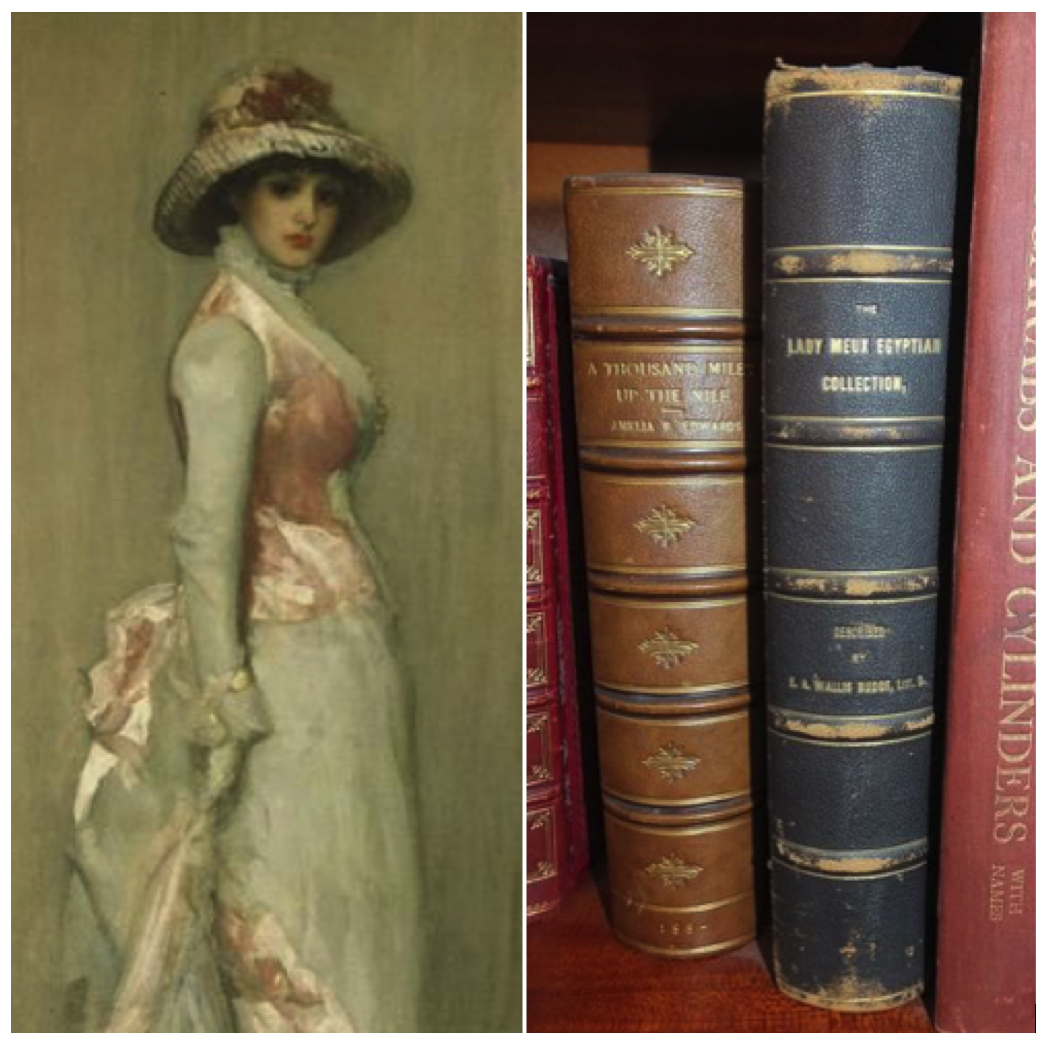
Lady Meux painted by the American artist James Abbott McNeill Whistler in 1881 and the catalogue of her Egyptian collection by noted Egyptologist Sir Ernest Wallis Budge.
Morris, Desmond (born 1928) is a renown author (best known for his best seller ‘The Naked Ape’ published in 1967), zoologist, surrealist painter and passionate collector, noted for his collection of ancient Cypriote pottery, published as a sumptuous volume by Phaidon in 1985 (The Art of Ancient Cyprus) which although out-of-print remains the best reference available for ancient Cypriote pottery. He first started collecting postage stamps as a small boy and then moved on to fossils and minerals, then seashells, then tribal art, then modern art, then ancient Cypriote art, amassing some 1100 fine Cypriote objects. He then moved on to collect Russian icons and amassed a fine collection of Precolumbian art, then he moved on to Chinese art and finally assembled a collection of Algerian Berber pottery. He bought almost all his pieces at Sotheby’s and Christie’s in London, when there was far more on the market than there is now, although he also bought some objects from dealers in London, New York and Europe. Following the death of his wife, Desmond sold much of his remaining collections (his famed Cypriote art collection had been sold much earlier to finance other collecting interests) and moved to a smaller house in Ireland to live near his family. Desmond always regarded it important to have one’s collection on display around you and not shut away in cupboards. His advice - only buy items that catch your eye and are somehow special. Perfect advice from a true connoisseur.
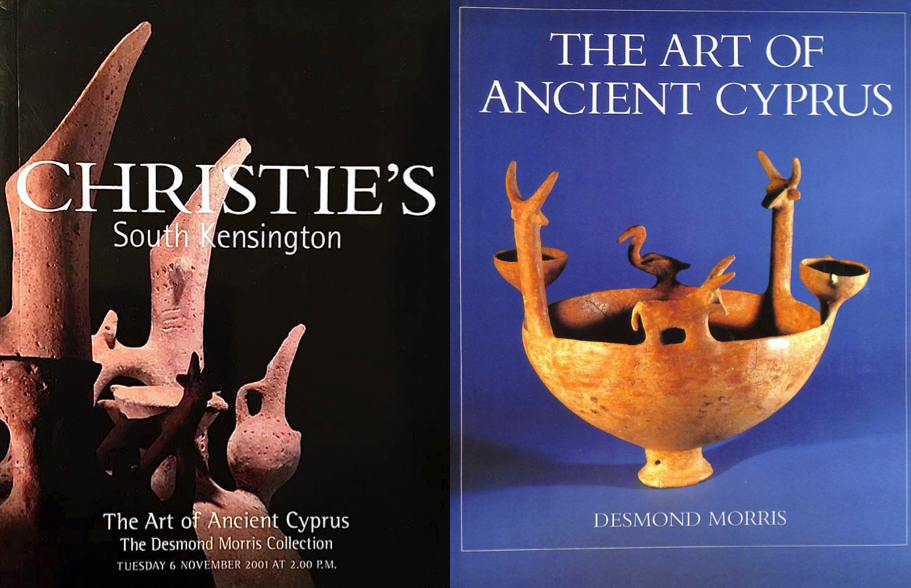
Desmond Morris built up a fine and extensive collection of ancient Cypriote pottery, amassing some 1100 fine Cypriote objects, now dispersed, but published as a sumptuous volume by Phaidon in 1985. This book remains the best reference available for ancient Cypriote pottery.
Negus, Peter (1920-2012) was a prolific collector who worked in the insurance industry for most of his life. His wife worked for Coutts Bank for many years and they shared an enormous passion for natural history, geology and archaeology, amassing a large and rather indiscriminate collection of fossils, shells and ancient artefacts. He was particularly interested in ancient corals publishing two scientific papers on the subject, which included descriptions of new species. He also had a particular interest in conservation and Egyptology, buying many Egyptian artefacts from dealers in the Drury Lane area of London. He was a member of the Geologists’ Association for over 50 years, acting as Treasurer from 1979 to 1988. Well-known for his geological and archaeological interests and as a colourful raconteur, he left much of his estate to the Egyptology Department of University College, London.
Phillips, Llewellyn Caractacus Powell (1871-1927) held a number of positions while resident in Egypt, including Professor of Medicine at the Egyptian Government School of Medicine, Cairo, and Senior Physician at Kasr-el-Aini Hospital, Cairo. In 1915 during the Gallipoli campaign he was appointed the Honorary Commander of the British Red Cross Hospital at Giza. He was mentioned in dispatches four times, and was awarded the Ottoman Order of the Medjidie, 3rd Class, and the Order of the Nile, 3rd Class. He formed a collection of antiquities while in Egypt noted for Arab glass weights and coins and part of his collection was sold at Christie’s during 1992-1993; while part resides in the Egyptian Museum, Cairo. He donated seven coins to the British Museum in 1912.
Rustafjaell, Robert de (1876-1943) was a renown British-American collector, eccentric, author and a man of many aliases, who worked in Egypt as a geologist and mining engineer at the end of the 19th Century. In 1909 he opened an antiquities shop on the main street at Luxor, which he called the Museum of Practical Archaeology, and according to Ludwig Borchardt, it offered a considerable number of fakes. De Rustafjaell built up a large collection of Egyptian antiquities, notable for Egyptian lithics. His collection was dispersed by Sotheby, Wilkinson & Hodge in five sales held in 1906, 1907, 1913, 1914 and 1915. Rustafjaell was a canny seller often issuing press releases about important discoveries related to objects from his own collection just offered at auction, with the aim of driving up prices. After World War I, he was declared bankrupt and emigrated to the United States, where he called himself Col. Prince Roman Orbeliani. A posthumous sale of his remaining antiquities took place in New York in December 1949. Despite his colourful career, not a single photo of Robert de Rustafjaell is known to exist, which is perhaps exactly what he wanted given his elusive nature.
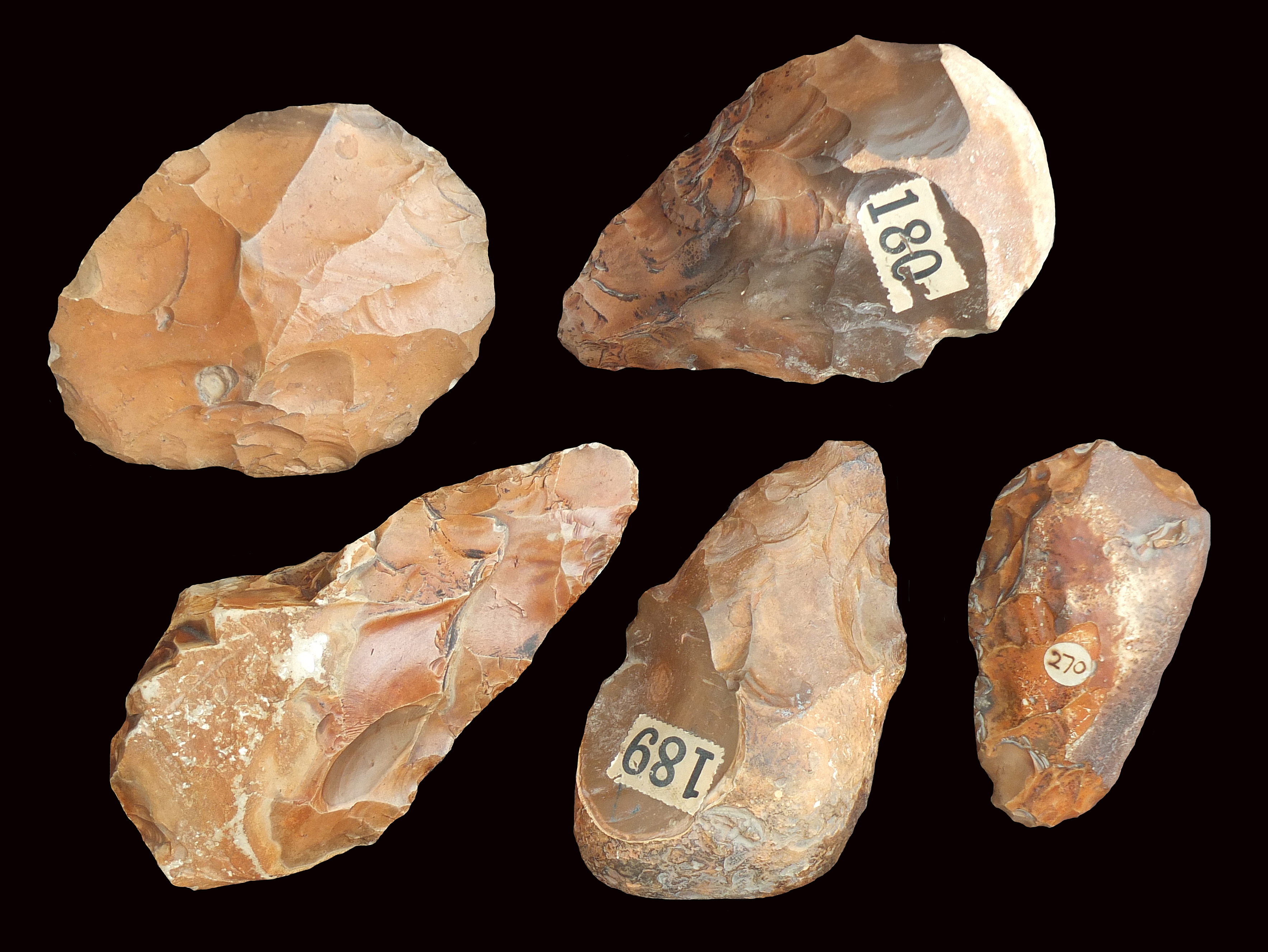
Egyptian handaxes from the de Rustafjaell collection, showing the typical labels used to catalogue his pieces.
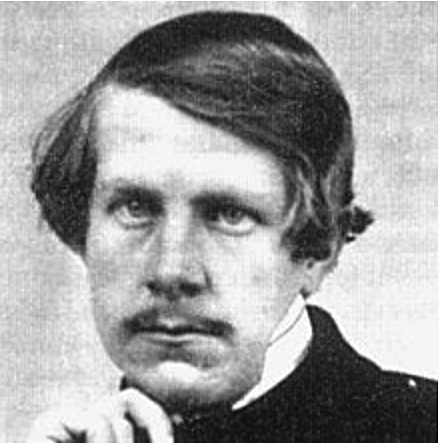
William Tyssen-Amherst - renown for his Egyptian collection
Tyssen-Amherst, William, 1st Baron Amherst of Hackney (1835-1909) was a noted collector of Egyptian antiquities amongst other works of art, books and manuscripts. At his home Didlington Hall, Norfolk, he built a museum for his rapidly growing Egyptian collection, which was based on the Leider and Dr John Lee Collections that he bought in the 1860s and added to extensively through further purchases. It was in the Egyptian Room at Didlington Hall, that Howard Carter, the finder of Tutankhamun’s tomb, first found his interest in Egyptology. Lord Amherst’s collecting passions were such that he left his business interests largely in the care of an agent, Charles Cheston, who embezzled his money to fund a gaming habit, massively depleting Amherst’s wealth by many hundreds of thousands of pounds, forcing the sale of his valuable book collection amongst other things. But the family’s passion for Egypt was such that the famed Egyptian collection was one of the few things that was not sold. Amherst’s eldest daughter Mary Rothes Tyssen-Amherst (1857-1919) was also a passionate egyptophile. It was only after her death from breast cancer in 1919, that the Egyptian collection was catalogued with the assistance of Howard Carter and auctioned by Sotheby, Wilkinson & Hodge on 13-17 June, 1921.
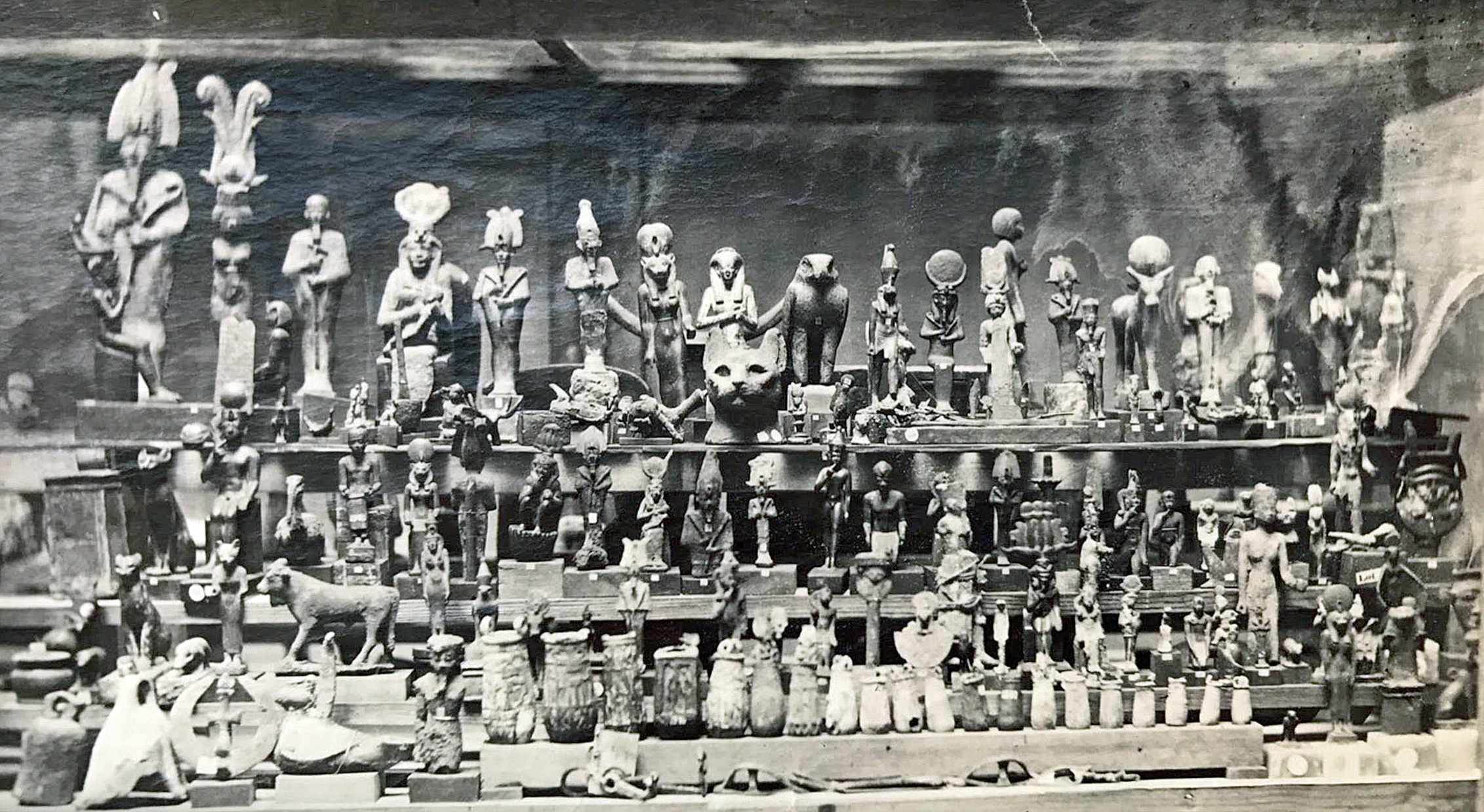
Egyption bronzes in the Amherst Collection on display at Didlington Hall, Norfolk. The collection now dispersed.
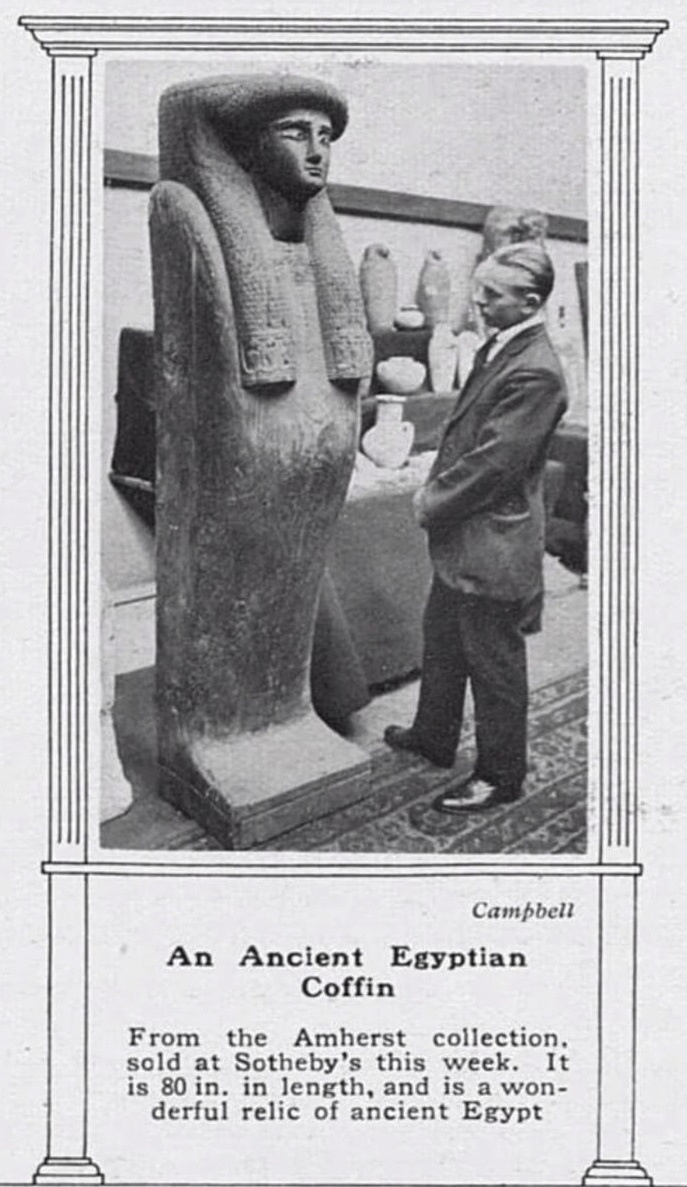
A potential buyer views an Egyptian coffin in the Amherst Sale of 1921.
Whitaker, Harold (1920-2013) was a leading British film animator whose work included Animal Farm (1954) and Heavy Metal (1981) and the industry handbook Timing for Animation (1981), long-considered a classic of film animation techniques. He also had a keen interest in Roman and Romano-British archaeology, forming a nice collection of Roman antiquities, mainly brooches, pottery and bronze implements.